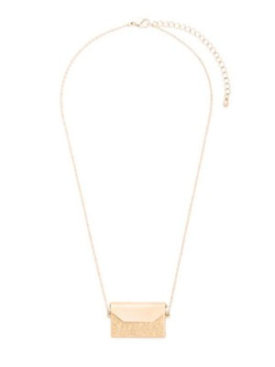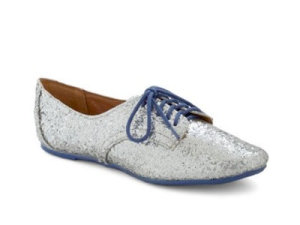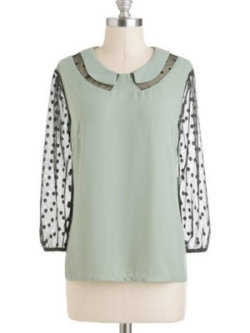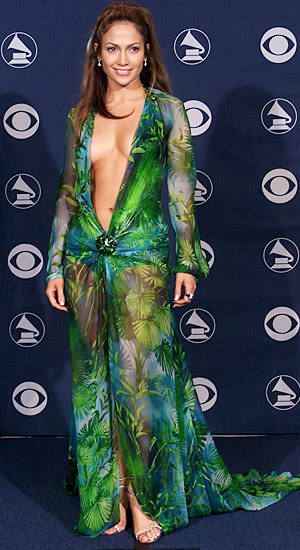
If you're the yawning type, these seven careers could banish boredom from the workplace.
If you get bored easily, the daily grind of the working world might be as exciting to you as watching paint dry. So what do you look for in a job if you're the easily underwhelmed type?
"Needing to be stimulated and excited is all about having new challenges and never knowing what the day might bring," says Bradley Brummel, a member of CareerBliss's Board of Advisors as well as a psychology professor at the University of Tulsa specializing in psychology of the workplace.
Ready to find a professional life less ordinary? Check out these seven careers that could bring a new challenge on any given day.
CAREER #1: PUBLIC RELATIONS SPECIALIST
If you love talking to people, can tell a great story, and thrive in sticky situations, pursuing a career as a public relations specialist might be just what your high-energy personality needs to blossom in the workplace.
Daily Duties: Public relations specialists are witty wordsmiths who, according to the U.S. Department of Labor, might be responsible for everything from crafting speeches, interviews, and press releases to managing media requests. Fundraising and developing brand identity could be another important task of public relations specialists as well.
No Yawns Here: PR specialists rarely get bored because they're always on their toes, handling unexpected media issues on a daily basis. "There is always a product or story or crisis to pitch or spin," says Brummel. "Not only do you have to plan for how the public will perceive your message, but you have to able to adapt with any changes as the story unfolds."
Education Options: According to the U.S. Department of Labor, a bachelor's degree is generally needed for public relations specialist positions, and employers typically prefer candidates who study public relations, communications, or journalism.
CAREER #2: ELEMENTARY SCHOOL TEACHER
If you're someone who loves the smell of freshly sharpened pencils and being around high-energy children, going after a career in teaching elementary school might be an ideal way to keep learning while staying on your toes.
Elementary school teachers have a full plate of responsibilities. According to the U.S. Department of Labor, they typically teach basic subjects such as reading and math, but they also communicate with parents about student progress and help students develop social skills.
No Yawns Here: Elementary teachers usually don't have any time to twiddle their thumbs. "From fights to accidents to parents - every day brings a new challenge," says Brummel, which means those inclined to boredom might love the career. "Every day can also bring a new success as one child learns to share or stand in line or figures out a new concept. There are a myriad of successes and setbacks every day."
Education Options: According to the Department of Labor, all states require that public elementary school teachers possess a bachelor's degree in elementary education. In addition, some states also require elementary school teachers to major in a particular subject, such as science or math. And keep in mind that all public school teachers are required to have a license, though requirements vary by state, adds the Department.
CAREER #3: POLICE OFFICER/PRIVATE INVESTIGATOR
m a variety of tasks, including background checks, investigating computer crimes, tracing missing people, and even protecting celebrities or dignitaries.
No Yawns Here: Police officer and private investigator are two careers great for someone who loves not knowing what to expect. Why? "Every case or traffic stop or encounter has the potential to be explosive," says Brummel. "You never know when someone is going to run or attack."
Education Options: The Department of Labor says that typically, to pursue a career as a police officer, you need at least a high school diploma, although many agencies require a college degree or some college coursework. Schools offer criminal justice and law enforcement programs. Most future police officers are also required to graduate from their agency's training academy, adds the Department.
Although many jobs don't have formal education requirements, private detectives typically have some college education. Some jobs may require an associate's or bachelor's degree. Courses in political science or criminal justice are helpful, reports the Department.
CAREER #4: PARALEGAL
Do you have an eagle-eye for details and organization but don't want to end up pushing paper around a desk? Use your skills in a stimulating way by preparing for a paralegal career, a great professional pursuit that could banish boredom from your day.
Paralegals are busy bees. According to the U.S. Department of Labor, paralegals manage everything from legal research to drafting correspondence and obtaining affidavits. They support lawyers doing a variety of tasks.
No Yawns Here: Paralegals work in an environment that is ideal for anyone on the prowl for stimulating work. "You are always researching and discovering new potential avenues and cases or decisions that could help your firm's lawyers help the client win a case," explains Brummel. "It is high-pressure, creative data hunting every day."
Education Options: The Department of Labor explains that the majority of paralegals either have an associate's degree in paralegal studies, or a bachelor's degree in a different field and a certificate in paralegal studies.
CAREER #5: SOFTWARE DEVELOPER
Does shifting the entire landscape of computer technology appeal to you? Do you have a knack for detailed work, but don't want to be stuck in the doldrums of office life? Pursuing a career as a software developer could be the ideal mix of work and play that you're looking for.
Software developers typically take a software product from start to finish, tackling its design, testing, and development for the market or a particular client, says the U.S. Department of Labor. Additional elements of this position may include working alongside programmers as well as ongoing collaboration with other computer specialists to create an efficient, user-friendly system.
No Yawns Here: The multi-faceted nature of being a software developer is ideal for people who love a challenge, a tangible reward, and different tasks. "It is a highly creative job in which you are never sure if your latest code will do exactly what you imagined," says Brummel. "When it doesn't, you need to come up with effective ways around it. And then when you solve it, you can see the fruit of your work."
Education Options: According to the Department of Labor, software developers usually have a bachelor's degree in software engineering, computer science, or a related field; oftentimes employers also accept candidates with a degree in mathematics.
CAREER #6: REGISTERED NURSE
If you've got physical stamina, a kind heart, and a desire to feel truly alive each day, taking on a career as a registered nurse could be a great option to cure the workday boredom bug.
According to the U.S. Department of Labor, registered nurses (RNs) have a slew of different responsibilities, ranging from health promotion and patient care to consulting with doctors, offering emotional support, and teaching people how best to manage their illness.
No Yawns Here: As a nurse, one thing is certain: You'll never be looking at the clock. "Being a registered nurse requires the high-paced service of multiple patients on a day to day basis," says Brummel. "There is always someone to monitor, treat, talk to, or release once they are better."
Education Options: The Department of Labor says that registered nurses usually pursue one of two educational paths: a diploma from an approved nursing program, or an associate's degree in nursing (ADN). Registered nurses must also be licensed through the state.
CAREER #7: FASHION DESIGNER
If you love a fast-paced day brimming with equal parts creativity and style, pursuing a career as a fashion designer could be a wonderful way to create wearable art and never get bogged down by boredom at your job.
Fashion designers may create unique clothing - from shoes and accessories to children's apparel and sportswear. They study fashion trends and make predictions of future fashion trends. The U.S. Department of Labor explains that designers typically sketch designs, choose various fabrics, and give instructions on how to construct the products they've conceived of on paper.
No Yawns Here: High-energy people will thrive in the unpredictable and high-octane world of fashion design. "You always have to be on the lookout for the next new style," says Brummel. "Also, the industry is full of eccentric, demanding people, so you never know how your suggestions or styles will be received."
Education Options: Postsecondary education is typically not required for fashion designers, says the U.S. Department of Labor, but many fashion designers take classes or earn a bachelor's or associate's degree in a related field - such as fashion merchandising - that will improve their understanding of fabrics and textiles.


 Don't blame us when "Please Mr. Postman" winds up stuck in your head for days.
Don't blame us when "Please Mr. Postman" winds up stuck in your head for days. A visually-intriguing take on a collegiate classic.
A visually-intriguing take on a collegiate classic. Glittery footwear: still going strong, in case you were wondering.
Glittery footwear: still going strong, in case you were wondering. The cropped length keeps it from looking too corporate.
The cropped length keeps it from looking too corporate. Who framed Fido?
Who framed Fido? Mwah. Perfect for Valentine's day!
Mwah. Perfect for Valentine's day! Would look equally awesome with a pair of tailored trousers.
Would look equally awesome with a pair of tailored trousers. Tri-colored. Tri-flapped. Just try to resist it.
Tri-colored. Tri-flapped. Just try to resist it. We love the delicate double-layered collar.
We love the delicate double-layered collar. Don't be surprised if you spot these T-straps on an extra in the upcoming Gatsby reboot.
Don't be surprised if you spot these T-straps on an extra in the upcoming Gatsby reboot. Leather shorts are a wintertime style standby, and we adore that sweet scalloped hem.
Leather shorts are a wintertime style standby, and we adore that sweet scalloped hem. So perfect with a pair of leather leggings, or layered beneath a big black faux fur vest.
So perfect with a pair of leather leggings, or layered beneath a big black faux fur vest. The color alone makes it a must-have; plus, the long strap is ideal for slinging across your winter coat.
The color alone makes it a must-have; plus, the long strap is ideal for slinging across your winter coat. The LLD (little leather dress): just as vital a closet component as the LBD. And hey, this covers both bases!
The LLD (little leather dress): just as vital a closet component as the LBD. And hey, this covers both bases!










